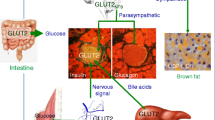Abstract
One of the main salient features recognized in mitochondrial diseases is the existence of a threshold in the degree of a mitochondrial deficit for the expression of the disease. When expressed as a function of the degree of heteroplasmy, the value of the threshold can be very high, around 90% (mutated DNA/total DNA). This means that 10% of normal DNA is enough to sustain a quasi normal mitochondrial oxidative phosphorylating flux. We have shown that most of the compensation is done at the metabolic level: for instance a 70% deficit of cytochrome oxidase decreases the oxidative flux by just 10%. Similar patterns are observed for the other complexes. Using Metabolic Control Anlaysis (MCA), we have shown that this kind of result is inescapable: the threshold value can be correlated to the control coefficient of the deficient step. The value of the threshold is reinforced by slight increases at the transcriptional and translational level as we show in a simple mathematical model.
Finally we associate the threshold in the expression of a deficit, to the threshold in the energy demand of different tissues, in order to describe various patterns of onset of mitochondrial diseases (double threshold hypothesis).
Similar content being viewed by others
References
Wallace DC: Diseases of the mitochondrial DNA. Ann Rev Biochem 61: 1175–1212, 1992
Torroni A, Wallace DC: Mitochondrial DNA variation in human populations and implications for detection of mitochondrial DNA mutations of pathological significance. J Bioenerg Biomemb 26: 261–271, 1994
King MP, Attardi G: Injection of mitochondria into human cells leads to a rapid replacement of the endogenous mitochondrial DNA. Cell 52: 811–819, 1988
King MP, Attardi G: Human cells lacking mtDNA: Repopulation with exogenous mitochondria by complementation. Science 246: 500–503, 1989
Hayashi J-I, Otha S, Kikuchi M, Takemitsu M, Goto Y-I, Nonaka I: Introduction of disease-related DNA deletions into HeLa cells lacking mitochondrial dysfunction. Proc Nat Acad Sci USA 88: 10614–10618, 1991
Chomyn A, Martinuzzi A, Yoneda M, Daga A, Hurko O, Johns D, Lai ST, Nonaka I, Angelini C, Attardi G: MELAS mutation in mtDNA site for transcription termination factor causes defects in protein synthesis and in respiration but no change in levels of upstream and downstream mature transcripts. Proc Nat Acad Sci USA 89: 4221–4225, 1992
Sciacco M, Bonilla E, Schon EA, DiMauro S, Moraes CT: Distribution of wild-type and common deletion forms of mtDNA in normal and respiration-deficient muscle fibers from patients with mitochondrial myopathy. Human Mol Genet 3: 13–19, 1992
Letellier T, Malgat M, Mazat J-P: Control of oxidative phosphorylation in muscle. Application to mitochondrial myopathies. Biochim Biophys Acta 1141: 58–64, 1993
Malgat M, Letellier T, Jouaville SL, Mazat J-P: Value of the control theory in the study of cellular metabolism–Biomedical implications. J Biol Syst 3: 165–175, 1995
Kacser H, Burns JA: The control of flux. In: DD Davies (ed). Rate Control of Biological Processes. Cambridge University Press, Cambridge, UK, 1973, pp 65–104
Heinrich R, Rapoport TA: A linear steady-state treatment of enzymatic chains. General properties, control and effector strength. Eur J Biochem 42: 89–95, 1974
Reder C: Metabolism Control Theory: A structural approach. J Theor Biol 135: 175–201, 1988
Groen AK, Wanders RJA, Westerhoff HV, Van der Meer R, Tager JM: Quantification of the contribution of various steps to the control of mitochondrial respiration. J Biol Chem 257: 275–457, 1982
Tager JM, Wanders RJA, Groen AK, Kunz W, Bohnensack R, Kuster U, Letko G, Bohme G, Duszynski J Wojtczak L: Control of mitochondrial respiration. FEBS Lett 151: 1–9, 1983
Mazat J-P, Reder C, Letellier T: Why are most flux control coefficients so small? J Theor Biol 182: 253–258, 1996
Bindoff LA: PhD thesis, Newcastle upon Tyne University, 1990
Kuznetsov AV, Clark JF, Winkler K, Kunz WS: Change in flux control coefficient of cytochrome c oxidase in copper deficient mottled brindled mice. In: E Gnaiger, FN Gellerich, M Wyss (eds). What is Controlling Life? Modern Trends in BioThermokinetics Vol 3. Innsbruck University Press, 1994, pp 141–144
Korzeniewsky B, Mazat J-P: Theoretical studies on the control of oxidative phosphorylation in muscle mitochondria. Application to mitochondrial deficiencies. Biochem J 319: 143–148, 1996
Beziat F, Volz-Lingenhol A, Saint Paul N, Alziari S: Mitochondrial genome expression in a mutant strain of D. subobscura, an animal model for large scale mtDNA deletion. Nucl Acid Res 21: 387–392, 1993
Debise R, Touraille S, Durand R, Alziari S: Biochemical consequences of a large deletion in the mitochondrial genome of a Drosophila subobscura strain. B.B.R.C. 196: 355–362, 1993
Spelbrink JN, Van Oost BA, Van den Bogert C: The relationship between mitochondrial genotype and mitochondrial phenotype in lymphoblasts with a heteroplasmic mtDNA deletion. Human Mol Genet 3: 1989–1997, 1994
Wallace DC: Mitochondrial genetics: A paradigm for aging and degenerative diseases? Science 256: 128–133, 1993
Kacser H, Burns JA: The molecular basis of dominance. Genetics 97: 639–666, 1981
Letellier T, Heinrich R, Malgat M, Mazat J-P: The kinetic basis of the threshold effects observed in mitochondrial diseases: A systemic approach. Biochem J 302: 171–174, 1994
Gellerich FN, Kunz WS, Bohnensack R: Estimation of flux control coefficients from inhibitor titrations by non-linear regression. FEBS Lett 274: 167–170, 1990
Holzhütter H, Colosimo A: SIMFIT: A microcomputer software-toolkit for modelistic studies in biochemistry. CABIOS 6: 23–28, 1990
Author information
Authors and Affiliations
Rights and permissions
About this article
Cite this article
Letellier, T., Malgat, M., Rossignol, R. et al. Metabolic control, analysis and mitochondrial pathologies. Mol Cell Biochem 184, 409–417 (1998). https://doi.org/10.1023/A:1006826927220
Issue Date:
DOI: https://doi.org/10.1023/A:1006826927220




